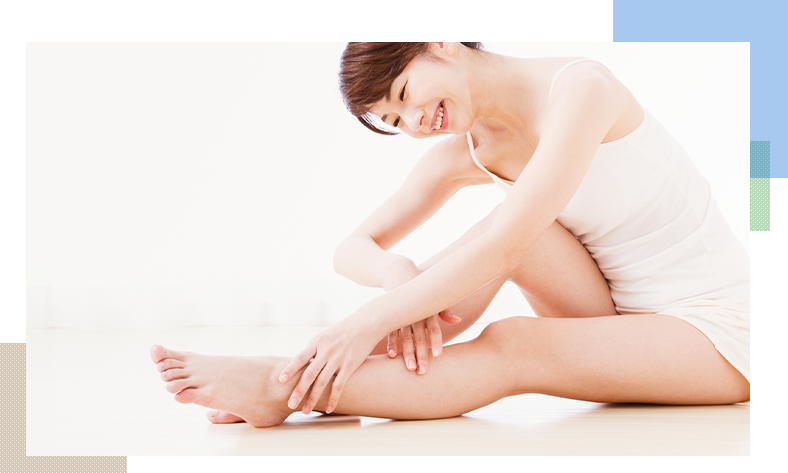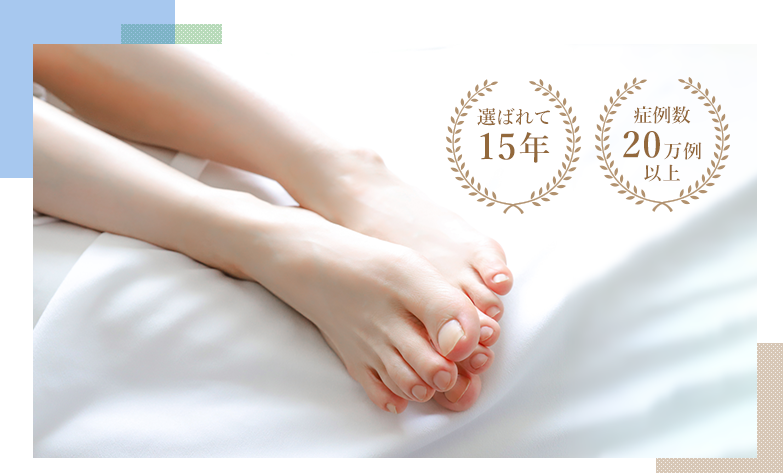
Ingrown nails, particularly toenails, are a common yet painful foot condition affecting millions worldwide, including residents and visitors in Japan's vibrant cities of Fukuoka and Sapporo. As of 2025, with increased awareness of foot health amid active lifestyles, seeking timely treatment is crucial to prevent complications like infections or chronic pain.
This comprehensive guide explores the causes, symptoms, home remedies, and professional options for managing ingrown nails. We highlight top-recommended clinics in Fukuoka and Sapporo, drawing from reliable medical sources and local expertise. Whether you're a local navigating Hakata's bustling streets or exploring Sapporo's snowy trails, these recommendations ensure accessible, high-quality care.
What Are Ingrown Nails? Causes and Symptoms
Defining the Condition
An ingrown nail occurs when the edge of the nail grows into the surrounding skin, often on the big toe. This leads to inflammation, tenderness, and potential infection if untreated. In Japan, where podiatry is emerging but often integrated into dermatology or orthopedics, early intervention is emphasized to maintain mobility.
Common Causes
Several factors contribute to ingrown nails. Tight or ill-fitting shoes, common in Japan's fashion-forward culture, compress toes and force nails inward. Improper nail trimming—cutting too short or rounded—exacerbates the issue. Genetic predispositions, such as curved nails, play a role, as do injuries from sports like soccer in Fukuoka or skiing in Sapporo. Sweaty feet from humid summers or active winters can soften skin, promoting bacterial entry. For those with diabetes, poor circulation heightens risks, making routine checks essential.
Recognizing Symptoms
Early signs include redness, swelling, and sharp pain around the nail bed, worsening when pressure is applied—like during a walk through Fukuoka's Canal City or Sapporo's Odori Park. Pus drainage signals infection, accompanied by warmth and throbbing. If neglected, it can lead to granulomas (overgrowths of tissue) or abscesses requiring surgical intervention. Prompt recognition prevents escalation; consult a specialist if pain persists beyond a few days.
Home Remedies: First-Line Relief
Before rushing to a clinic, many find relief through simple at-home strategies, endorsed by experts in 2025 guidelines. These are particularly useful for mild cases, buying time until professional care in Fukuoka or Sapporo.
Soaking and Hygiene
Soak the affected foot in warm water mixed with Epsom salt for 15-20 minutes daily. This softens the nail, reduces swelling, and eases pain—ideal after a long day in Fukuoka's humid climate. Dry thoroughly and apply an antibiotic ointment like bacitracin, followed by a bandage. Apple cider vinegar soaks offer antimicrobial benefits, a tip popular among Japanese home remedy enthusiasts.
Trimming Techniques
Gently lift the nail edge with clean dental floss or cotton to encourage straight growth. Trim nails straight across, not rounded, using sterilized clippers. Avoid self-cutting if infection is present to prevent spreading bacteria.
Pain Management
Over-the-counter options like ibuprofen or acetaminophen alleviate discomfort. Elevate the foot and wear loose socks to minimize pressure. For persistent cases, these remedies bridge to clinic visits.
Professional Treatments: From Conservative to Surgical
When home care falls short, Japan's medical landscape offers advanced, minimally invasive options tailored to ingrown nails.
Non-Surgical Approaches
Partial nail avulsion with phenolization—chemically cauterizing the nail matrix—boasts high success rates with low recurrence. Wire corrections, like the German VHO method, reshape nails without removal. These are outpatient procedures, often completed in 30 minutes under local anesthesia.
Surgical Interventions
For severe cases, full matrixectomy removes the nail root, preventing regrowth. Laser therapy, gaining traction in 2025, precisely targets tissue with minimal scarring. Costs range from ¥10,000-¥30,000 per toe, covered partially by national health insurance for residents.
Emerging 2025 Trends
Topical gels with natural ingredients, like tea tree oil formulations, complement treatments. Telemedicine consults via apps allow initial assessments, convenient for Sapporo's remote areas.
Top Recommended Clinics in Fukuoka
Fukuoka, Kyushu's gateway city, hosts specialized foot care amid its blend of tradition and modernity. Dermatology and orthopedic departments dominate, with English support for expats.

Dokutaneiru Tsumekakumei Fukuoka Keyaki Dori Ten
This renowned nail specialist clinic excels in ingrown toenail corrections using innovative techniques like wire therapy. Patients praise the expert staff for painless procedures and quick recovery—often back to ramen tours in hours. Located centrally, it's accessible via Hakata Station. Reviews highlight effective treatments for chronic cases, with costs around ¥15,000. Ideal for first-timers seeking specialized care.
Fukuoka University Hospital Dermatology Department
A pillar of comprehensive skin care, this facility treats ingrown nails alongside broader dermatological issues. As a teaching hospital, it employs cutting-edge diagnostics, including ultrasound for nail bed assessment. Outpatient services run efficiently, with appointments bookable online. Specialties include preventive foot care workshops, perfect for active Fukuokans. English materials available; expect ¥5,000-¥20,000 fees.
Jun-ichi Fukushi Orthopaedic Clinic
Led by Dr. Jun-ichi Fukushi, this practice focuses on foot and ankle orthopedics, including surgical ingrown nail fixes. Recognized by international foot care networks, it offers personalized plans, from soaks to phenol avulsions. Conveniently near central Fukuoka, it's lauded for thorough follow-ups. A 2025 Reddit thread recommends it for English-speaking patients needing "serious toe work."
University Hospital of Occupational and Environmental Health
In nearby Kitakyushu, this hospital's podiatry-integrated orthopedics department handles work-related foot injuries, including ingrown nails from occupational wear. Multidisciplinary teams ensure holistic care, with rehab for post-treatment mobility. Strong in preventive education, it's a top pick for laborers in Fukuoka's industrial hubs.
Top Recommended Clinics in Sapporo
Sapporo, Hokkaido's capital, emphasizes resilient foot health against cold winters. Clinics blend dermatology with lower limb expertise, accommodating snowy commutes.
Sapporo City General Hospital Dermatology Department
Certified by the Japanese Society of Dermatology, this public facility provides specialized ingrown nail treatments, from conservative soaks to surgical corrections. Active in 2025 research, it offers low-recurrence phenol methods. Centrally located, it's efficient for locals; English support via interpreters. Fees are insurance-friendly, starting at ¥3,000.
Caress Memorial Hospital Plastic Surgery Department
Focusing on aesthetic and functional foot repairs, this clinic uses minimally invasive techniques for ingrown nails, including laser-assisted matrixectomy. Part of Sapporo's Lower Limb Relief Center, it addresses complications like infections swiftly. Patients appreciate the clean, modern setup—ideal post-ski season. Appointments via phone; costs ¥12,000+.
N18 Tsuji's Clinic
An English-friendly internal medicine hub, it collaborates with podiatry specialists for ingrown nail management. Emphasizing gastroenterology-foot health links (e.g., via nutrition), it provides comprehensive evals. In Higashi-ku, it's walkable from subways. Reviews note gentle care for elderly patients, with holistic remedies integrated.
B-Plus Sapporo Seikotsuin (Overall Wellness Clinic)
Rated highly on 福岡巻き爪 札幌巻き爪 おすすめ Yelp for podiatric services, this chiropractic-adjacent clinic treats ingrown nails through alignment and nail corrections. Non-surgical focus suits mild cases, with massages for pain relief. Affordable at ¥8,000 sessions, it's popular among Sapporo's wellness crowd for preventive foot scans.
Prevention Tips for Long-Term Foot Health
Preventing ingrown nails enhances quality of life in Japan's dynamic environments. Choose wide-toed shoes—crucial for Fukuoka's urban hikes or Sapporo's winter boots. Trim nails weekly, straight across, and moisturize cuticles. Maintain hygiene with daily washes, especially post-exercise. For high-risk individuals, annual podiatry check-ups catch issues early. Incorporate foot exercises, like toe spreads, to strengthen arches.
Prioritize Your Steps Forward
Ingrown nails needn't sideline your adventures in Fukuoka's yatai stalls or 福岡巻き爪 札幌巻き爪 おすすめ Sapporo's beer gardens. With home remedies offering quick relief and clinics like Dokutaneiru in Fukuoka or Sapporo City Hospital 福岡巻き爪 札幌巻き爪 おすすめ delivering expert care, effective solutions abound. Consult promptly to avoid complications—your feet deserve the best in 2025's advanced landscape. For personalized advice, book via clinic websites or Japan's health hotline (dial 119 for emergencies). Stay mobile, stay pain-free.